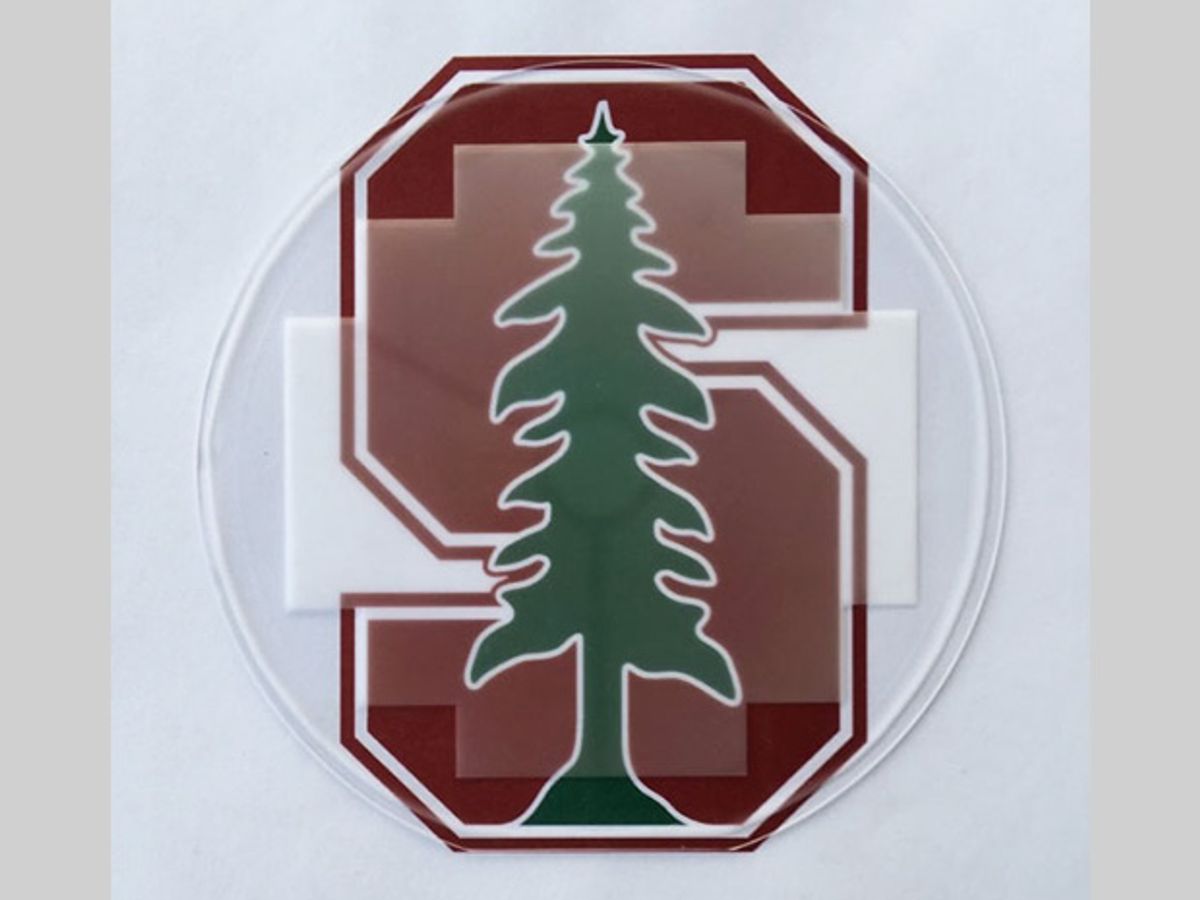Last December, researchers at Stanford University developed a passive radiator that uses outer space as a universe-size heat sink. It absorbs ambient heat and then emits it at a very specific infrared band (between 8 and 13 micrometers), for which the Earth’s atmosphere is completely transparent. So the radiator can transfer the heat entirely off-world.
Stanford's radiator is cheap to produce (or so they say), but it would be fighting for rooftop space with all the solar panels that we (should) have up there. In work published today in PNAS, the Stanford researchers describe the performance of a prototype photonic crystal cooling system that can sit on top of a solar cell and cool it by up to 13 degrees Celsius—boosting the amount of electricity that it generates.
The PNAS paper opens by pointing out that "the universe, at a temperature of 3 K, represents a significant renewable thermodynamic resource." No kidding: we just need a way to leverage it. The passive radiator we talked about last year does that very well, and is able to lower the temperature of anything that it's attached to by 5 degrees Celsius using the universe as a heat sink. This works even during the daytime in full sun, and can achieve cooling below ambient air temperature. However, part of what makes it so effective is the fact that it's also reflecting 97 percent of incoming sunlight, which isn't going to fly if you're trying to stick it on top of a solar panel, which depends on absorbing sunlight to function.
What's new here is the development of a silica photonic crystal that's visibly transparent: it still acts as a blackbody radiator, but you can put it on top of a conventional solar cell. When you do, it transfers heat out of that cell, lowering its temperature by up to 13 degrees Celsius, emitting that heat out into space. At the same time, the antireflection and light trapping effects of the crystal slightly boosts the performance of the cell underneath. And there's one more bonus: the relative efficiency of a crystalline silicon solar cell declines by 0.45 percent for every 1 °C increase in operating temperature. In terms of absolute efficiency, then, the 13 °C temperature reduction that the Stanford prototype demonstrated would result in an efficiency improvement of over 1 percent, which is substantial.
The photonic crystal itself is a 500-μm thick double-side–polished fused silica wafer, with a pattern of 6-μm wide, 10-μm deep holes etched into it. The crystal was fabricated using photolithography and etching, but it should be possible to use other techniques at larger scales to reduce costs. If we start thinking about all of the potential applications—assuming a cost-effective manufacturing process, which seems realistic—what we end up with in general is solar power being in the unique position of being able to generate electricity while simultaneously cooling things. This is immediately valuable for relatively small scale applications like automotive air conditioning (especially given its effect on fuel economy) but also at larger scales, anything where energy is just as important as coolness could benefit from solar cells that are extra chill.
Evan Ackerman is a senior editor at IEEE Spectrum. Since 2007, he has written over 6,000 articles on robotics and technology. He has a degree in Martian geology and is excellent at playing bagpipes.



